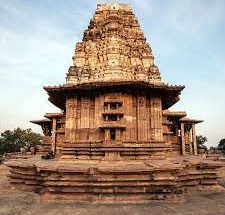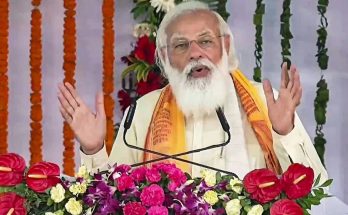They are bold, innovative, experimental and hungry to be heard and seen. Emerging artists are clearly the new toast in the art world even as their works are being scrutinized and appreciated like never before. But do they have a market space and are art collectors receptive to them? Hoihnu Hauzel finds out.
Some call them a breath of fresh air in the art world that’s gorged with many predictable works. Some love them for their boldness and their innate mad streaks that allow them to be creative without any boundaries or inhibitions. Clearly, emerging artists are the new buzzword in the art firmament. And given growing focus on their works, it would be no exaggeration to say that, there’s no looking back for this breed of young artists who are slowly but surely capturing audience with their distinctive intonations.
Shefali Somani of Shrine Empire Gallery in New Delhi clarifies that emerging artists do not necessarily mean young artists. “Emerging artists are not always young in that sense. Rather, it means newer names,” she says. Yes, names, that may not necessarily ring a bell but, nonetheless, are gifted with singular voices that resonate from the heart of India with a dash of experimentalism and the audacity to stretch limits of expression. And more people are receptive to the idea of having their homes adorned with works by these nameless artists whose works to them are more than just a visual treat. Interestingly, the truth is, many find their works more than just inspiring. Late last year, Sunaina Anand of Art Alive Gallery, literally handpicked 24 young new artists from different parts of India and held a group show, @rt Virtually Real, that brought together an eclectic collection of artworks. It was an act of faith for a gallery that’s known for its association with big names since its inception in 2001. Not surprisingly, the exhibition opened to a houseful of revelers over cocktails and fancy finger food, much to the amazement and delight of many artists who were never exposed to flash lights, media and curious eyes that spared no effort in examining every bit of their works, including the materials they used. The artists looked in disbelief at the sudden burst of attention their works commanded in a glitzy city far away and far removed from where they drew their inspiration: rural India.
A bold step that was, but for Anand, it was the most obvious thing to do. “Most of them are on the threshold of success. It was a matter of discovering them and providing them the right platform,” says Anand whose gallery even branched out to create an online platform to represent them, www.emergingartists.in last year.
This February, Peter Nagy’s Nature Morte held a solo show by a fairly new name, a Bangalore-based artist, Krishnaraj Chonat, which opened in style complete with cocktails et al. What drew Nagy to Chonat, a mid-career artist’s works was the fact that he “hit the right balance of intriguing content, a rather unconventional exploration of materials, and a superb level of craftsmanship.” Chonat may have been exhibiting for more than a decade but he works slowly, according to Nagy, “and so he has not had lots of shows and may not be known to a wide public. This is his first solo show in Delhi.” Perhaps, that made him suitably interesting to an equally hungry crowd.
Like Chonat, there are many unsung talented artists across the country. But not many are lucky like Chonat to be discovered and given such a platform. Nagy says his method of discovering newer talents is by “looking at images sent to me by artists, by seeing group shows of young talent, by recommendations by friends and artists that I work with.”
Since the time Nagy opened his gallery Nature Morte in Delhi in 1997, he has been drawn towards the works of emerging artists. “They were the voice of my own generation and something I identified very closely with (even though I was an American and these emerging voices were those of Indian artists).” His gallery used to showcase many works by emerging artists. “As the gallery has matured, so have our artists and our programme is now for more established for mid-career artists. But, of course, young talent does come along and we do occasionally make room for it in our exhibition schedule,” he says.
Somani prefers slightly unknown names whose works are “unconventional and edgy.” She also does very limited shows, averaging to about three shows a year. “My idea is to have very edgy shows and get a new idea of art which people have never seen before. The idea is to show new and fresh shows.” Like her upcoming solo show, “The Other Side of Time, by Samantha Batra Mehra, to be opened on April 18. The artist is from Mumbai but lives in New York. Her very life’s journey that spans from Mumbai to New York has contributed in making her work different, goading Somani to take on her for a solo show. “She does the most amazing drawing in black and white and used them in unconventional format. She also uses joints in her installation,” says Somani, who got a lot of attention for showcasing part of Samantha’s work during the art fair.
As works of unknown artists travels to private galleries, a natural market opened up for many artists who would have remained unknown. Ina Puri, an established name in the art world, who curates, documents and makes films, among others, says: “There will always be a market for them (emerging artists). The market will always create space for new artists because there are people who collect such works and are looking for new artists. Even in the art fair, there were good works by people we have not heard of.”
But of course, for seasoned collectors, there will always be a tendency to look for more well-known names. But that could be for other reasons. “I find the collectors in India rather timid about emerging artists these days. They don’t feel independent in their taste in art, so they are more interested in artists who have been showing for a while and are proven in the market and have gallery support. I see very little interest in very young artists from collectors these days, regardless of the prices,” says Nagy. He is, however, confident that emerging artists will carve a market space. “Their presence cannot be denied in the market. They are there not because it’s cheap but because they are good,” reasons Puri.
Buyers may be few for emerging works, but as Somani predicts “it’s just a matter of time.” “The overseas market though is different. It is much more focused and dedicated to emerging art, that’s why they are buying.” According to Somani, it is “the younger collectors are more receptive to conceptual works as compared to the older buyers who tend to buy the very obvious ones.”
Perhaps one of the main problems for emerging artists could be having limited access to venues for exhibition. Most galleries are private and often beyond the reach of many emerging artists. “Therefore, we need more galleries like the Lalit Kala Academy. Otherwise, it is difficult for new artists,” points out Puri.
Lalit Kala Academy is, of course, the first choice for many young artists due to the minimum rental fee. Individual artists pay a minimum of Rs.15,000 rental per week per show. If it’s a group show, the rental fee per week can be Rs.22,000. But this being the only subsidised government-owned gallery, the venue is booked for more than two years in advance. “We do not interfere with the commercial aspect of their art. The buyers are in direct touch with the artist,” says Dr Sudhakar Sharma, secretary, Lalit Kala Academy which has 365 days of show in all the 11 galleries within the premise of the academy. Within a gap of one day, each show lasts for a week to a fortnight. So, it means there are over 100 shows per year. “We try to accommodate maximum artists,” says Sharma. That works out to at least ten shows per year by upcoming and emerging artists which is both a solo and group shows. In their scheme of plan, emerging artists are very important, says Sharma. Which is why in the last quarter, the academy accommodated young artists along with senior ones during the Biennale in Bangladesh and Beijing. “We club emerging artists as we felt they are important,” he says. Compared to Lalit Kala’s democratic patronage, most private art galleries charge anything between 20-30 percent per work from the artists, or work out mutually agreeable terms with individual artists.
Economics and the vagaries of the market apart, there is a new sense of optimism that the Indian art world is poised for a fresh infusion of new talents, and these emerging artists are not going to wither in anonymity.
Author Profile
- India Writes Network (www.indiawrites.org) is an emerging think tank and a media-publishing company focused on international affairs & the India Story. Centre for Global India Insights is the research arm of India Writes Network. To subscribe to India and the World, write to editor@indiawrites.org. A venture of TGII Media Private Limited, a leading media, publishing and consultancy company, IWN has carved a niche for balanced and exhaustive reporting and analysis of international affairs. Eminent personalities, politicians, diplomats, authors, strategy gurus and news-makers have contributed to India Writes Network, as also “India and the World,” a magazine focused on global affairs.
Latest entries
 DiplomacyApril 23, 2024Resetting West Asia, re-booting the world, but not fast enough: T.S. Tirumurti
DiplomacyApril 23, 2024Resetting West Asia, re-booting the world, but not fast enough: T.S. Tirumurti India and the WorldApril 22, 2024India’s G20 Legacy: Mainstreaming Africa, Global South in global agenda
India and the WorldApril 22, 2024India’s G20 Legacy: Mainstreaming Africa, Global South in global agenda DiplomacyApril 10, 2024Diplomat-author Lakshmi Puri pitches for women power at LSR
DiplomacyApril 10, 2024Diplomat-author Lakshmi Puri pitches for women power at LSR India and the WorldApril 6, 2024UN envoy pitches to take India’s solutions to the world stage
India and the WorldApril 6, 2024UN envoy pitches to take India’s solutions to the world stage








